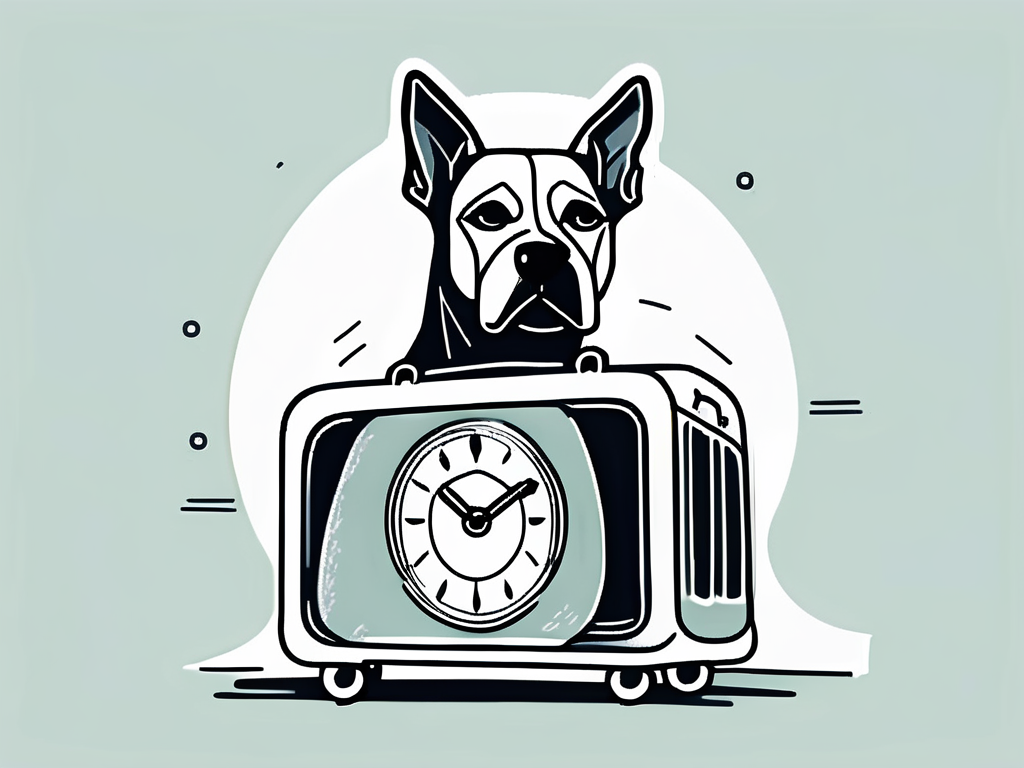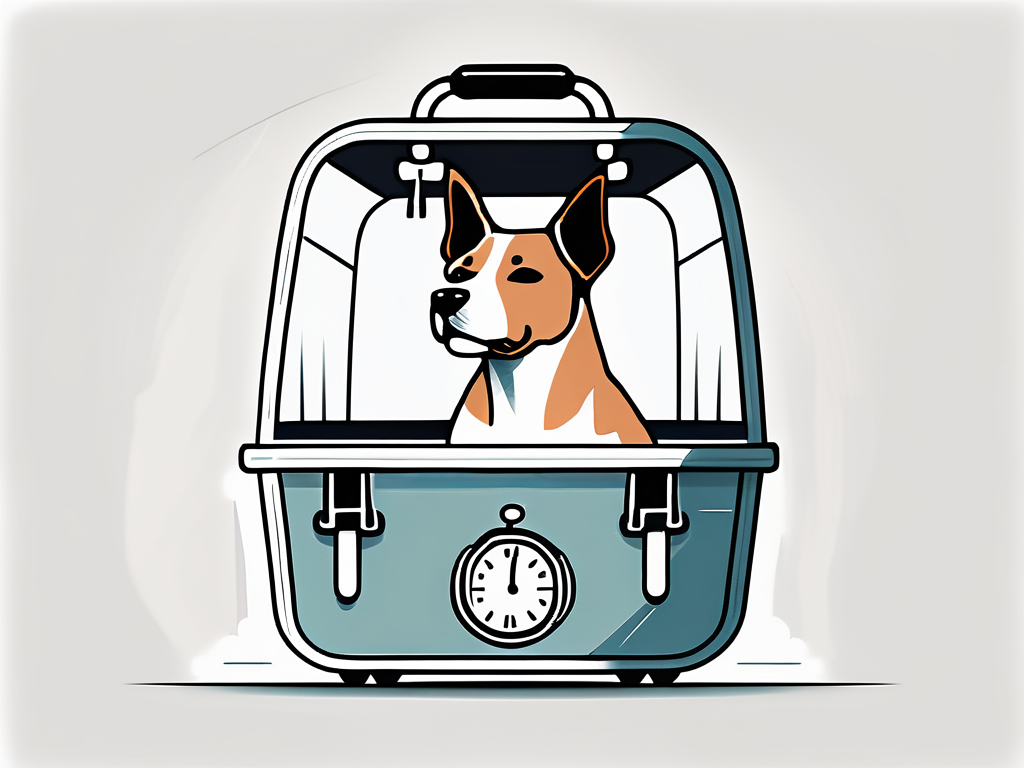Unleash your curiosity as we dive into the fascinating world of dog carriers and explore how long our furry friends can comfortably stay cooped up. Whether you have a jet-setting lifestyle or are simply looking for a safe way to transport your four-legged companion, understanding the limits of a dog's carrier confinement is vital to their well-being.
Understanding the Importance of a Dog Carrier
Before we embark on this journey of discovery, let's take a moment to appreciate the significance of a dog carrier. These versatile crates serve multiple purposes, from providing a secure den-like sanctuary to offering a convenient means of transportation. They can even act as handy training tools, aiding your pooch's development and progress. With the right carrier, you can take your furry friend along on exciting adventures or provide a comfortable space at home.
Furthermore, dog carriers play a crucial role in promoting safety and security for your beloved pet. Whether you're traveling by car, plane, or simply taking a trip to the vet, a carrier ensures that your dog remains protected and contained, reducing the risk of accidents or escapes. Additionally, carriers can help in creating a sense of routine and familiarity for your dog, especially in new or stressful situations, offering a sense of comfort and stability.
The Purpose of a Dog Carrier
Dog carriers serve various purposes depending on the context. For travel, carriers keep your dog safe and contained, preventing them from roaming around and distracting you while driving. They also act as a familiar refuge, offering comfort and security in unfamiliar surroundings. At home, a dog carrier can be an invaluable tool for managing your pet's behavior during training or providing a safe retreat during periods of stress.
Moreover, dog carriers can aid in the socialization process by allowing your furry companion to accompany you to various places, exposing them to different environments, people, and animals. This exposure can help in building your dog's confidence and reducing anxiety, leading to a well-adjusted and sociable pet.
Choosing the Right Size Carrier for Your Dog
Just like humans, dogs come in all shapes and sizes. Therefore, it's crucial to select a carrier that matches your dog's dimensions. A carrier that is too small can cause discomfort and restrict movement, while one that is too large may compromise safety. Measure your pup's height, length, and weight to find the perfect fit – it's the key to happy travels!
Consider the future growth potential of your dog when selecting a carrier to ensure that it remains suitable for them as they mature. A carrier with proper ventilation, sturdy construction, and easy-to-clean features can also enhance the overall comfort and usability for both you and your furry friend. Remember, a well-chosen carrier is not just a convenience but a vital tool in providing a secure and nurturing environment for your dog in various situations.
Factors Influencing the Duration a Dog Can Stay in a Carrier
Now that we've laid the groundwork, it's time to address the various factors that determine the length of time a dog can spend in a carrier.

When considering how long your furry friend can comfortably stay in a carrier, it's crucial to delve deeper into the intricacies of their size, breed, age, and health condition. These factors play a vital role in ensuring a safe and stress-free travel experience for your canine companion.
Dog's Size and Breed
A larger breed may start to feel cramped after an hour or so, whereas smaller dogs are generally more adaptable to extended periods of time in a carrier. Remember, all dogs are unique, so if you have a tiny canine with a big personality, make sure to consider their specific needs!
Furthermore, certain breeds have specific requirements when it comes to confinement. For example, brachycephalic breeds, such as pugs and bulldogs, may have difficulty breathing in enclosed spaces for prolonged periods. Understanding your dog's breed characteristics can help you make informed decisions regarding their time in a carrier.
Dog's Age and Health Condition
Just like people, the physical health and age of a dog can impact how long they can comfortably stay in a carrier. Young puppies have plenty of energy but require frequent potty breaks, while older dogs may have joint issues that make prolonged confinement uncomfortable. Always take into account your dog's age and health condition when planning their time in a carrier.
Moreover, dogs with underlying health conditions, such as anxiety or arthritis, may have different needs when it comes to staying in a carrier. It's essential to consult with your veterinarian to ensure that your pet's well-being is prioritized during travel or any other situation that involves confinement.
Carrier's Size and Comfort Level
The carrier itself plays a significant role in determining the duration a dog can stay inside. A spacious, well-ventilated carrier with plenty of padding and cozy bedding will make their stay more enjoyable. On the other hand, a cramped, uncomfortable carrier could lead to a restless and unhappy pet. Invest in a carrier that prioritizes safety and comfort.
Additionally, consider the design of the carrier in relation to your dog's comfort. Some carriers offer features such as removable/washable padding, adjustable straps, and multiple entry points, enhancing the overall experience for your canine companion. By selecting a carrier that meets both your dog's physical needs and your convenience, you can ensure a pleasant journey for both of you.
Potential Risks of Extended Time in a Carrier
While dog carriers are incredibly useful, it's important to be aware of the potential risks associated with extended time spent inside.

Extended travel in a carrier can also impact a dog's hydration levels. Access to water is crucial for a dog's well-being, and limited access during long journeys can lead to dehydration. It's essential to offer your dog water regularly and ensure they stay hydrated throughout the trip.
Physical Health Risks
Long periods of confinement can lead to muscle stiffness and reduced blood circulation. Dogs may become restless, anxious, or even prone to developing pressure sores. Regular breaks and exercises are essential to prevent these issues and maintain your dog's overall well-being.
Furthermore, prolonged confinement in a carrier can also affect a dog's digestive system. Changes in routine, limited access to food, and the stress of travel can lead to gastrointestinal issues. To mitigate this risk, consider feeding your dog smaller meals before the journey and providing familiar, easily digestible food during travel.
Mental Health Risks
Imagine being confined to a small space without any mental stimulation – it's not a pleasant thought! Dogs are social creatures that thrive on interaction and exploration. Extended periods in a carrier without proper mental stimulation can lead to boredom and anxiety. Ensure you provide regular opportunities for your dog to stretch their legs, explore their environment, and enjoy quality time together.
In addition to physical and mental health risks, prolonged time in a carrier can also expose dogs to temperature fluctuations. It's important to monitor the temperature inside the carrier to prevent overheating or chilling. Consider using cooling pads in hot weather and providing a warm blanket in colder conditions to keep your furry friend comfortable throughout the journey.
Tips for Safe and Comfortable Carrier Use
Now that we've covered potential risks, let's focus on creating a positive and enjoyable experience for both you and your furry friend while using a carrier.
Preparing Your Dog for the Carrier
Introduce the carrier gradually, allowing your dog to become familiar and comfortable with it. Offer treats, toys, and positive reinforcement to create positive associations. Consider using calming aids, like lavender-infused bedding, to ease anxiety during travel. By acclimating your pup to the carrier, you'll minimize stress and increase their overall comfort.
Ensuring Comfort During Travel
During travel, secure the carrier properly to prevent jostling or tipping. Place soft bedding inside for added coziness and consider covering the carrier with a breathable blanket to create a den-like environment. Ensure the carrier is well-ventilated and offers your dog a clear line of sight to help reduce anxiety during the journey.
Recognizing Signs of Stress in Your Dog
It's crucial to familiarize yourself with the signs of stress in dogs. If your canine friend displays excessive panting, trembling, drooling, or tries to escape the carrier, it may be an indication that they need a break. Regularly monitor your pet's behavior and take breaks when necessary to maintain both their physical and mental comfort.
Legal and Ethical Considerations for Dog Carrier Use
Before you embark on your next adventure, it's important to be aware of any legal requirements or guidelines surrounding the use of dog carriers.

Airline Regulations for Dog Carriers
If you're planning a jet-setting journey with your dog, familiarize yourself with specific airline regulations regarding the dimensions and specifications of dog carriers. Each airline has its own set of rules to ensure the safety and comfort of both passengers and pets. By adhering to these regulations, you'll guarantee a smooth and stress-free travel experience.
Animal Welfare Laws and Guidelines
Remember to consider the ethical aspect of using a dog carrier. Always prioritize the well-being of your furry friend and ensure their needs are being met. Familiarize yourself with animal welfare laws and guidelines provided by organizations such as the American Society for the Prevention of Cruelty to Animals (ASPCA) to ensure you are providing the best care possible.
Now armed with knowledge about dog carriers and the factors influencing how long a dog can comfortably stay inside one, you can make informed decisions for your furry companion's well-being. Remember, with the right carrier, preparation, and care, your dog can not only endure but also thoroughly enjoy their time in a carrier! So, fasten your seatbelts, pack your pup's favorite toys, and embark on many happy adventures together!




Share:
What is the weight limit for a K9 sports sack?
Are dog backpacks worth it?